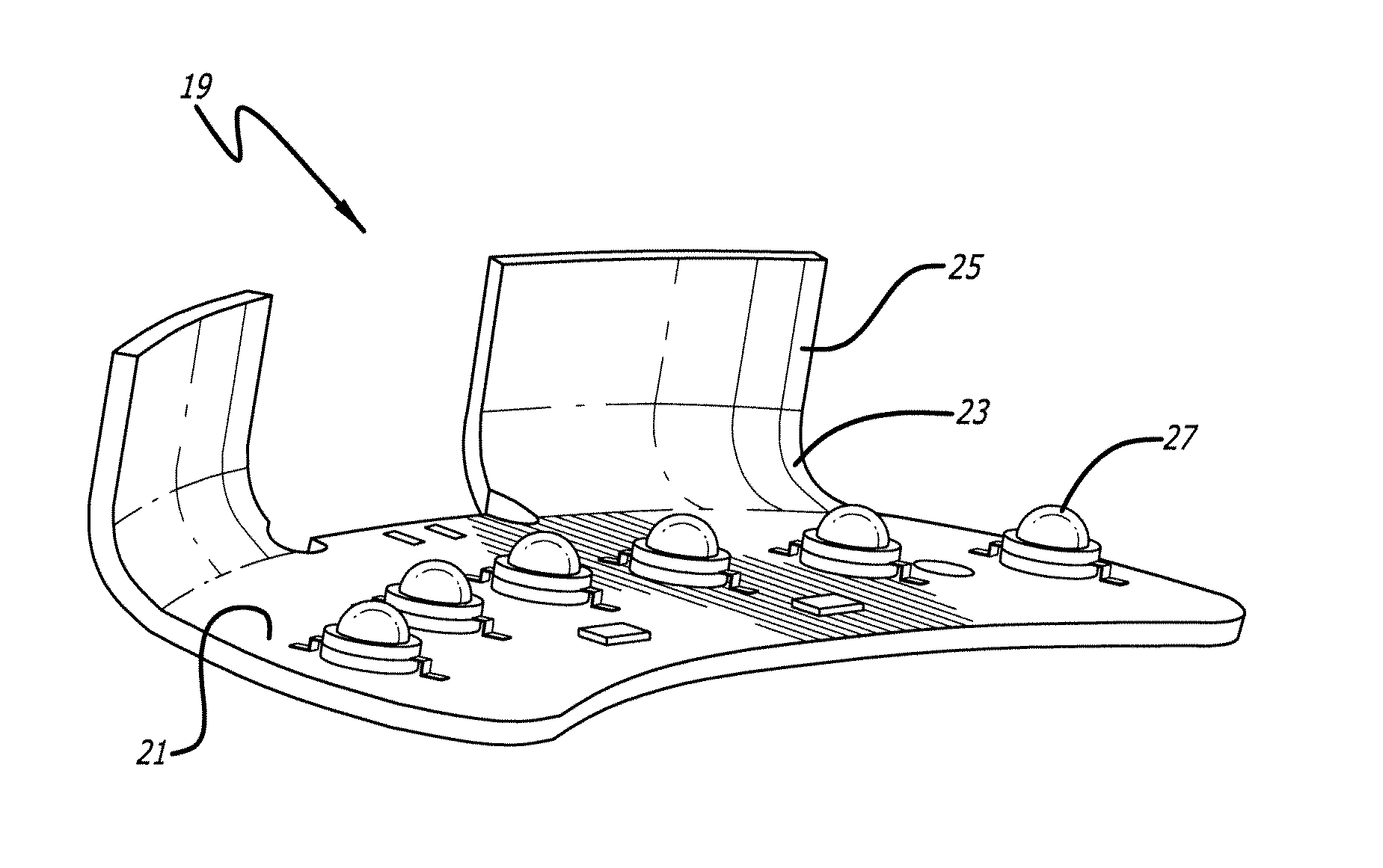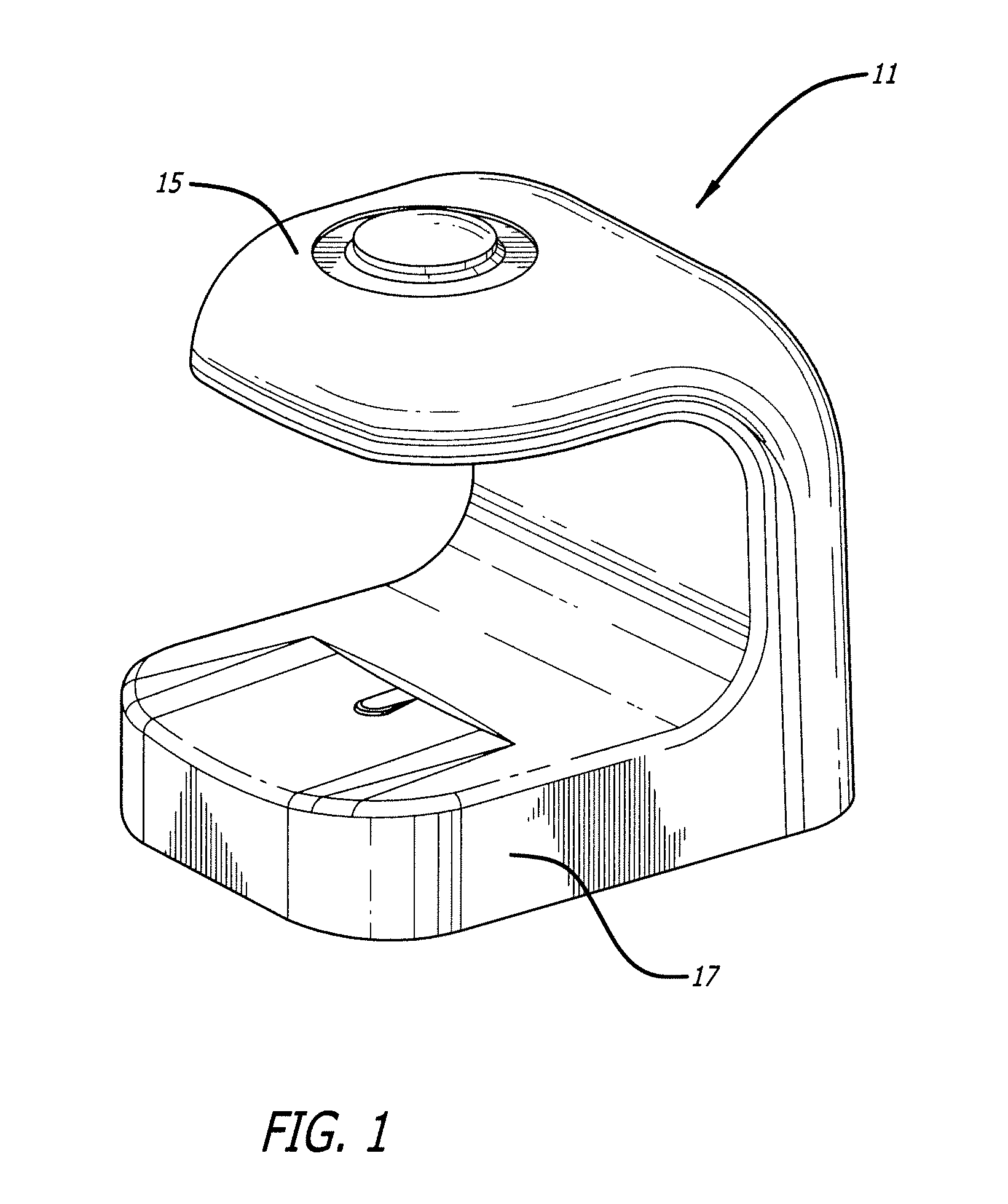Metal core printed circuit board as heat sink for leds
a printed circuit board and led technology, applied in the field of applications, can solve the problems of self-destruction of devices, overheating of junctions, etc., and achieve the effects of good thermo-conductor, good ventilation, and large aluminum surface area
- Summary
- Abstract
- Description
- Claims
- Application Information
AI Technical Summary
Benefits of technology
Problems solved by technology
Method used
Image
Examples
Embodiment Construction
[0011]Referring first to FIG. 1, the invented fingernail drying apparatus 11 is shown having a top portion 15 and base 17. FIG. 2 shows the invented fingernail drying apparatus in a partial cutaway, side view including an opening 13 into which a hand with fingernails coated with nail polish or the like to be dried is inserted. Located within the top portion is a metal core printed circuit board 19 which is described in further detail in FIGS. 3-6. Although not shown in FIG. 2, board 19 has a set of LEDs facing downward from top 15 towards base 17.
[0012]FIG. 3 shows the invented MCPCB 19 having a base 21, rounded corners 23 and extensions 25 from the rounded corners. Installed on base 21 is a set of LEDs 27. FIGS. 4-7 are top plan, side, front elevation and rear perspective views of board 19, respectively which are provided to clearly show the relationship between the mounted LEDs 27, rounded corners 23 and extended portions 25.
[0013]By providing MCPCB 19 with the rounded corners 23 ...
PUM
 Login to View More
Login to View More Abstract
Description
Claims
Application Information
 Login to View More
Login to View More - R&D
- Intellectual Property
- Life Sciences
- Materials
- Tech Scout
- Unparalleled Data Quality
- Higher Quality Content
- 60% Fewer Hallucinations
Browse by: Latest US Patents, China's latest patents, Technical Efficacy Thesaurus, Application Domain, Technology Topic, Popular Technical Reports.
© 2025 PatSnap. All rights reserved.Legal|Privacy policy|Modern Slavery Act Transparency Statement|Sitemap|About US| Contact US: help@patsnap.com



